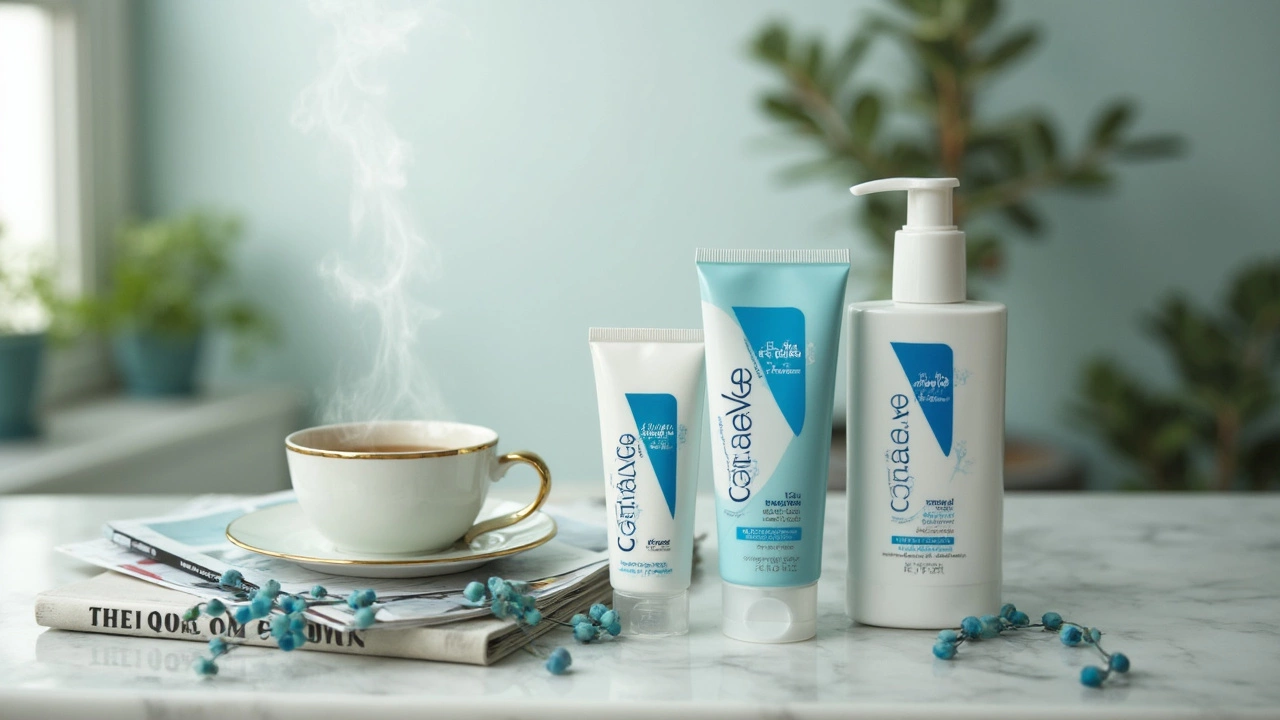Ceramides – The Simple Secret to Strong, Hydrated Skin
If you’ve ever wondered why some moisturisers feel different, chances are they contain ceramides. These tiny lipids are a key part of the skin’s natural barrier, the layer that keeps moisture in and irritants out. When the barrier is weak, you’ll notice dry patches, redness, and a feeling of tightness. Adding ceramides back into your routine can fix that – and it doesn’t require a complicated regimen.
What Are Ceramides?
Ceramides are a type of fat molecule that lives between the skin cells. Think of them as mortar between bricks; they hold the cells together and stop water from leaking out. Your skin makes ceramides naturally, but factors like age, harsh cleansers, and weather can deplete them. When the supply drops, the barrier gets leaky, leading to dryness and irritation.
There are several types of ceramides, usually labeled with numbers like Ceramide NP or Ceramide AP. All of them work the same way – strengthening the barrier – but some are better at slipping into the skin’s layers. Most commercial products blend a few types to cover all bases.
How to Use Ceramides in Your Routine
First, pick a product that lists ceramides near the top of the ingredient list. That means there’s a decent amount. You’ll find ceramides in creams, lotions, facial oils, and even some serums. If you’re new to them, start with a lightweight lotion for daytime and a richer cream for night.
Apply the ceramide product right after you cleanse while your skin is still damp. The moisture helps lock the ceramides in place. Follow with sunscreen in the morning – a good barrier works best when you protect it from UV damage.
For extra boost, look for formulas that also contain hyaluronic acid or glycerin. Those ingredients draw water into the skin, while ceramides keep it from escaping. The combo gives you a hydrated, plump look without feeling greasy.
If you have very dry or eczema‑prone skin, consider adding a ceramide‑rich ointment as a spot treatment before bed. A thin layer under your regular night cream can calm flare‑ups and speed up healing.
Finally, don’t forget that lifestyle matters. Avoid long, hot showers and harsh soaps, because they strip away ceramides. A balanced diet with healthy fats – think avocado, nuts, and fish – supports your skin’s natural production too.
In short, ceramides are the building blocks your skin needs to stay smooth and protected. Choose a product with solid ceramide content, use it right after washing, and pair it with simple habits for the best results. Your skin will thank you with fewer dry spots, less irritation, and a more comfortable feel all day long.
CeraVe Meaning: What Does the Skincare Brand Actually Stand For?
Ever wondered what CeraVe actually stands for? This article breaks down the name's real meaning, reveals how ceramides power your daily skincare, and clears up why CeraVe pops up in so many routines. Get easy tips for making the most out of these products, and learn what makes CeraVe a favorite—even if your skin is picky.
